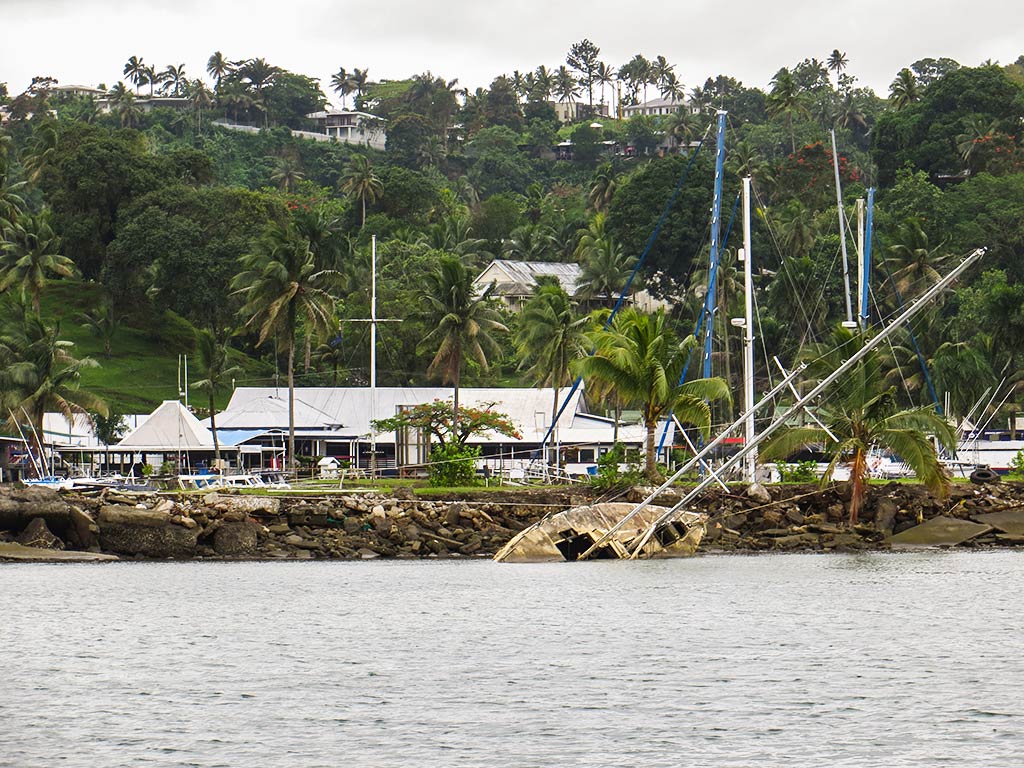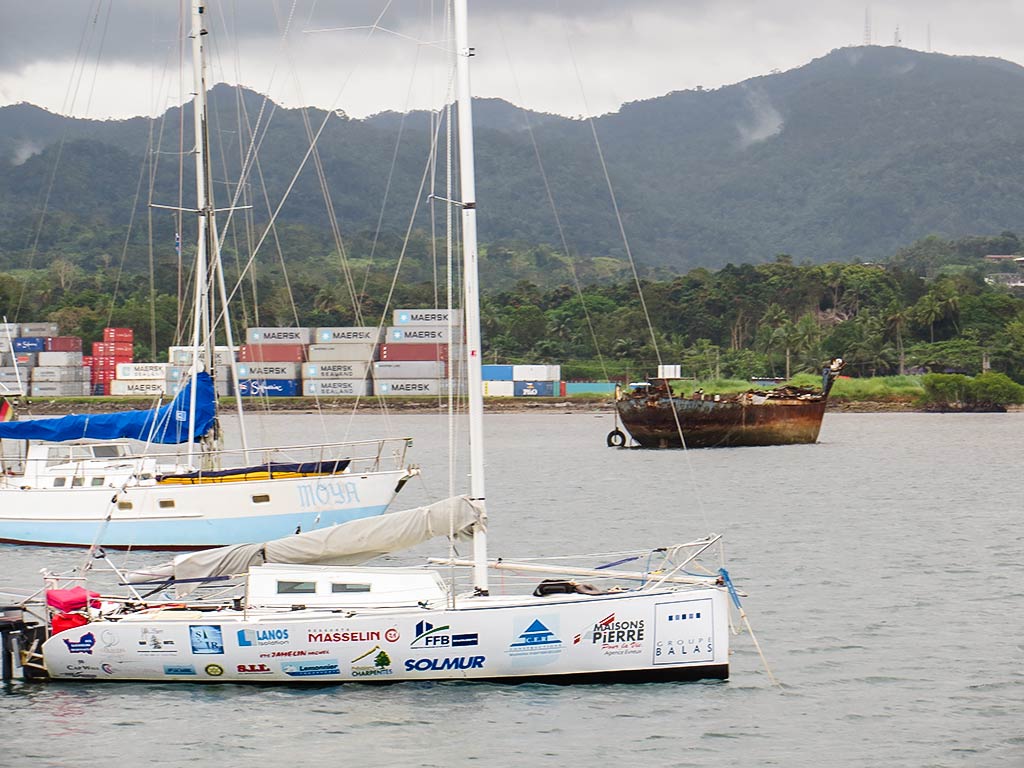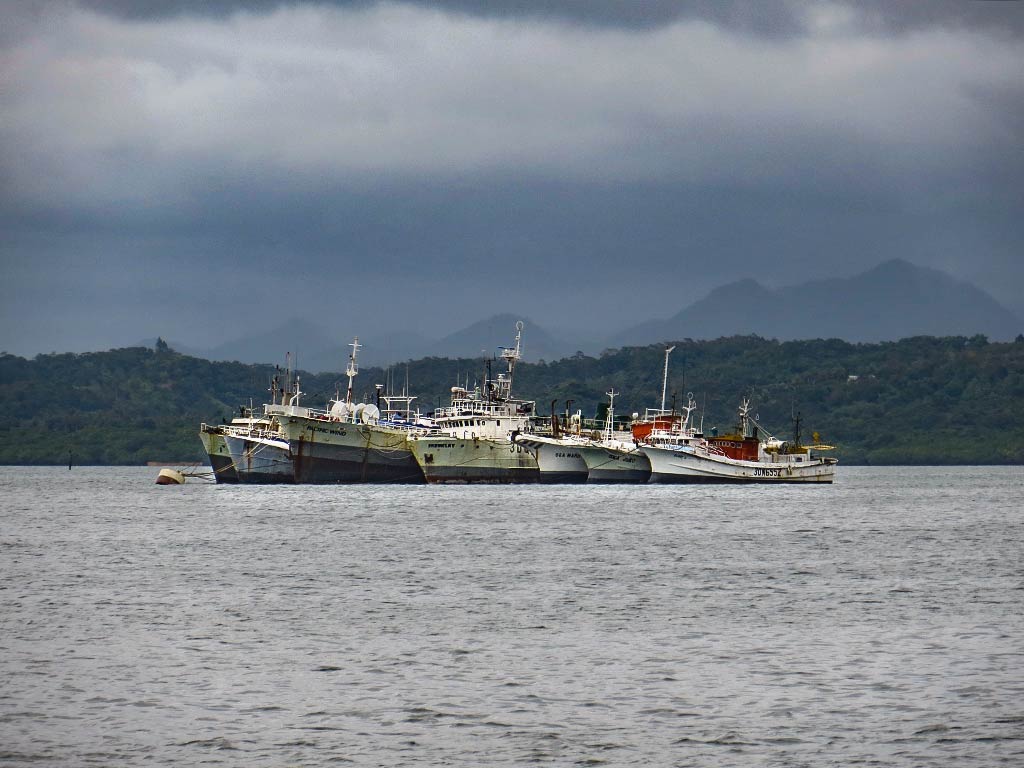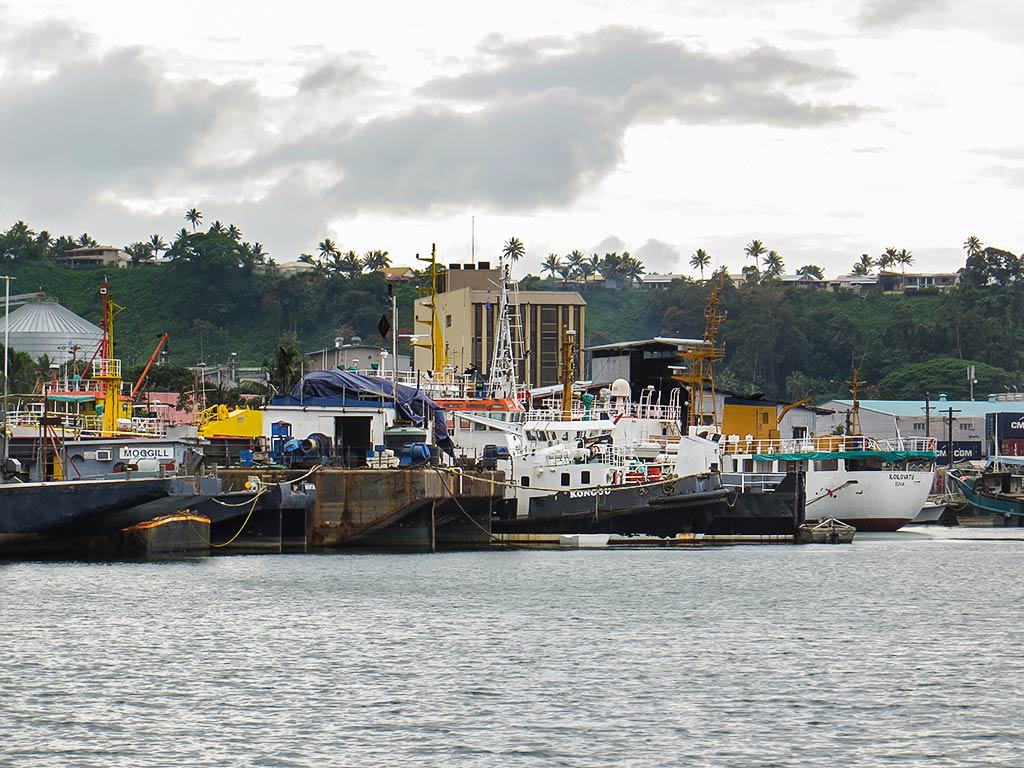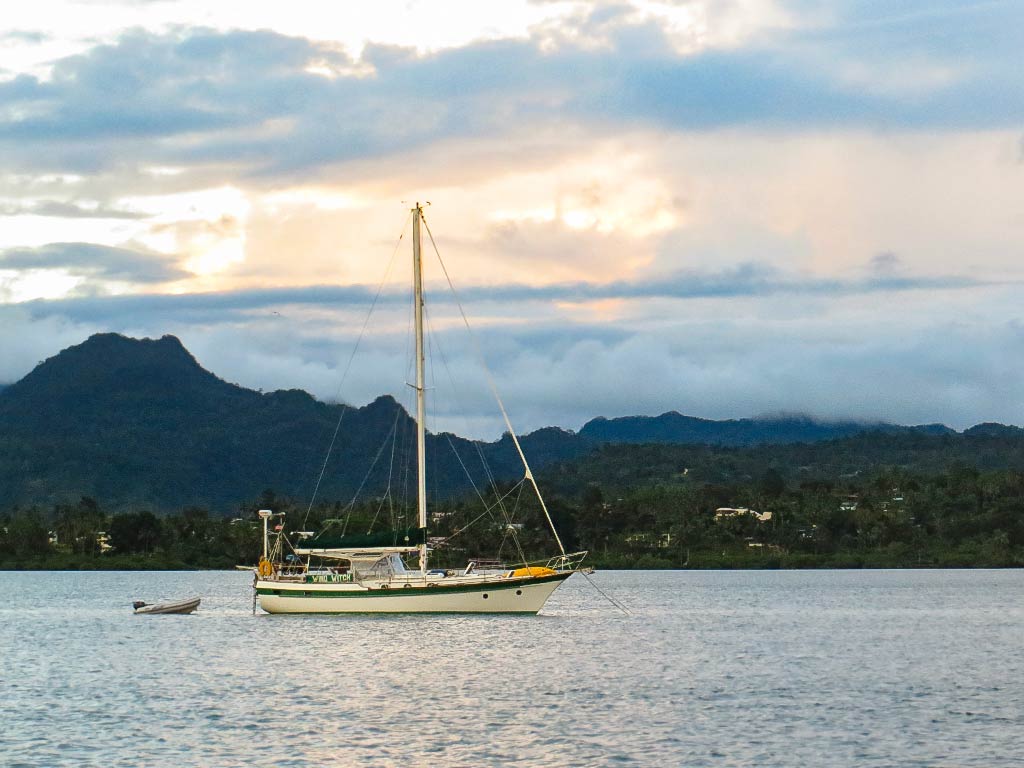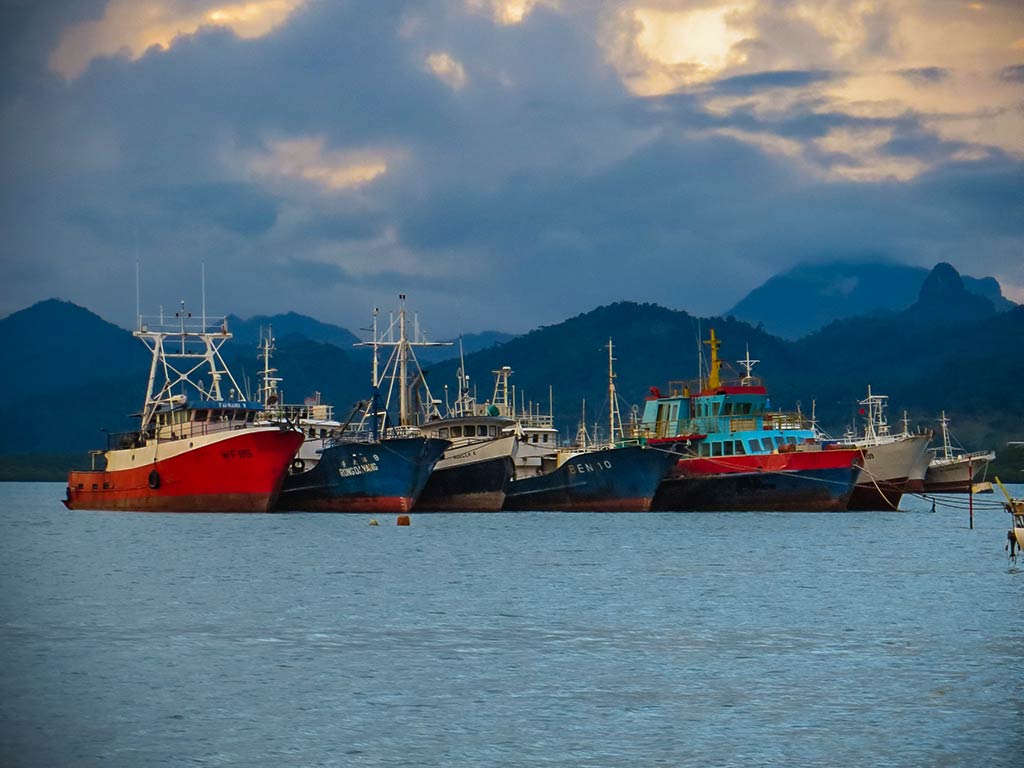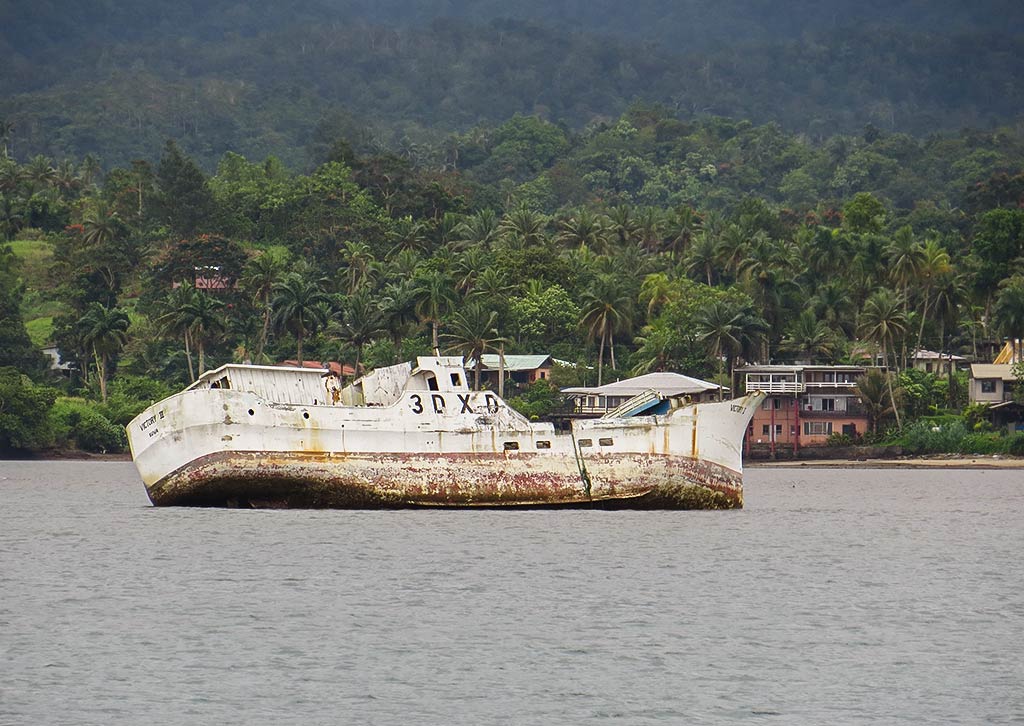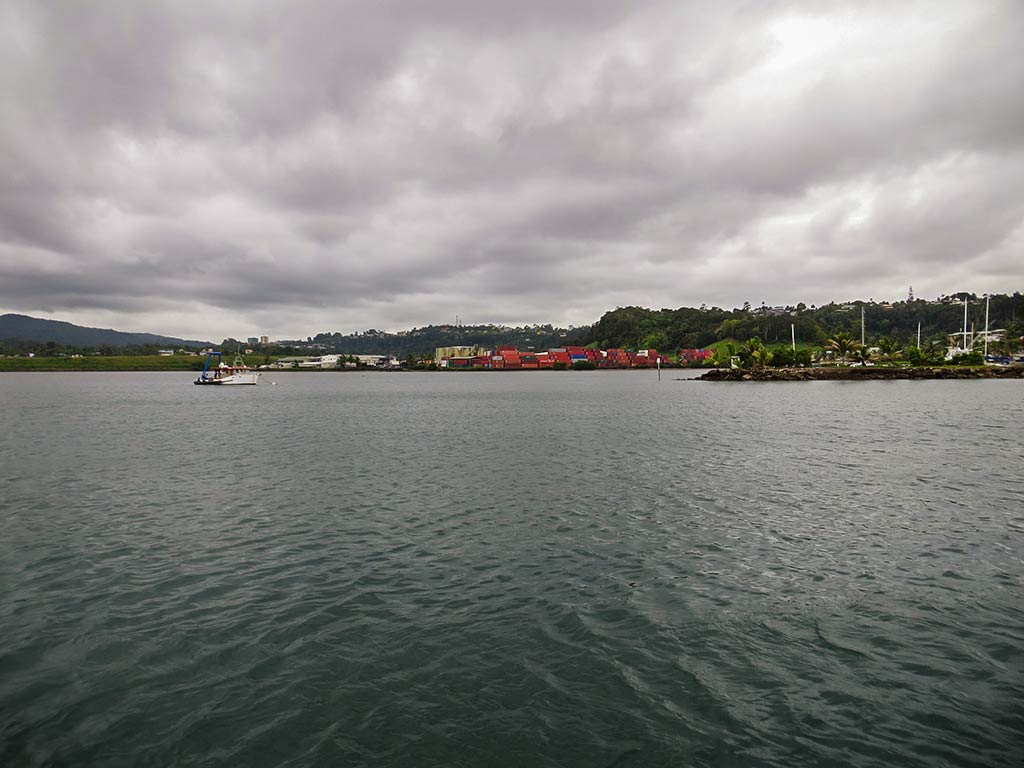November 10, 2013
It was time to head on to our final stop for the season: Fiji’s capital city of Suva. This is a big port city, with all the elements of any large city (shopping malls, government buildings, multi-story buildings, business headquarters, industrial plants, and city-style (enclosed and air-conditioned) restaurants. It’s also a port city with a mountainous and green terrain and a large central market filled with merchants hawking their wares. It has remarkably very few hotels as most foreign visitors come in on cruise ships. People who fly to Fiji arrive at the international airport on the west side of Viti Levu, a long distance away. In fact, most fly-in visitors never see Suva.
Since Suva is a day-long boat ride from Leleuvia, we had leave early in the morning. The winds were light, but it was gray and squally. The good thing: it was cool. The bad thing: squalls can have strong wind and we wanted to avoid them. In the end we had no squall encounters, but I was worried at times with these menacing dark gray patches looming around us. Below, a map approximating our route to Suva.
We were about 45 minutes outside Suva’s harbor entrance when our autopilot suddenly went out. We had to hand steer the rest of the way, not our favorite thing to do, but we were grateful this didn’t happen earlier in the trip. We did have some rain but it let up and soon enough as we were approaching Suva.
A very large reef protects and nearly encloses Suva harbor, but there’s a pass about a half-mile long through this reef, the Levu Passage. We had to be on our toes while navigating the pass because Suva’s a major port with lots of boat traffic ranging from big freighters to very small pangas, and without our autopilot we had to pay careful attention to the markers on the hillside. Rich focused his attention on maneuvering through boat traffic while I searched out the markers and made sure we were lined up properly. Waves were breaking on the reef on both sides of us as we traveled through, and we could see some old wrecks on the reef, reminders to be careful (not that we needed any reminders as we were definitely nervous as it was).
Once inside, the harbor is large, roundish, and very open, about 2.5 miles wide and 2 miles long. After we got through the pass we were able to relax a bit, but after quiet Leleuvia the shipping traffic was a bit overwhelming. Once we became confident we weren’t going to be run down, run anyone else down, or hit a reef, we were able to take it all in. This city had so many elements familiar to us: the cloudy skies of American Samoa, the industry and port activities of our home port of Wilmington, California, the green hilly terrain covered with buildings like Hong Kong (only on a much smaller scale), and a few wrecks in the harbor that reminded us of Nukualofa, Tonga.
The strangest thing were the Chinese fishing boats, huge and decrepit, tied up in scattered groups around the harbor. What was that about? They didn’t look sea worthy; were they just abandoned here? These strange boats and the wrecks gave this place a surreal feeling, especially in flat calm water under gray cloudy skies.
Before leaving New Zealand we’d gone to John Martin’s seminar for the ICA rally, and he summed up Suva by calling it “a pit,” making it clear there was no reason to go there. By then we’d found the talk arrogant, disdainful and pretty useless, full of fleeting references to islands and anchorages we’d never heard of as of course, we’d never been to Fiji. But it seemed a good portion of this rally group were repeat offenders, mostly there for the social experience and so knew the places he was referring to. Other people just intended to follow everyone else around so didn’t care about learning anything useful.
It was a rather frustrating experience, and we quickly caught on we shouldn’t take his comments as gospel. After the talk was over, we chatted with an experienced cruiser, asking his opinion of Suva—should we really avoid it? He said personally he loved Suva; so this thankfully opened our minds go going there.
And so now looking around this exotic and surreal looking place, we felt intrigued and optimistic. Yes, there were wrecks around the harbor, and it was industrial in areas along the shore, but the buildings and the greenery and the gray skies and the mountains made us feel somehow very comfortable here. Wanting to avoid the disappointment we had with Levuka (the old capital city), we decided to withhold judgement until we went ashore, but we couldn’t help but feel like we’d like it here.
We could see the yacht club area and motored over that way. The marina here is small, filled with local boats with virtually no room for transients; so visiting yachts have to anchor out beyond the marina’s breakwater. Thankfully this is generally a calm harbor (although it’s best to move elsewhere in strong southwesterly winds). There were about 10 boats anchored and another two on moorings. One mooring was free so we quickly snatched it up, happy to be on a mooring instead of anchored in area rumored to have dubious holding ground.
We took a few photos which I’m posting in this gallery below. As you can see it was cloudy and late in the afternoon, but I hope these photos capture a sense of time and place. (You can click to enlarge and scroll through the photos below.)
And below two panorama shots, the bottom of which was taken from our mooring. You can click to enlarge the photos.–Cyndi

